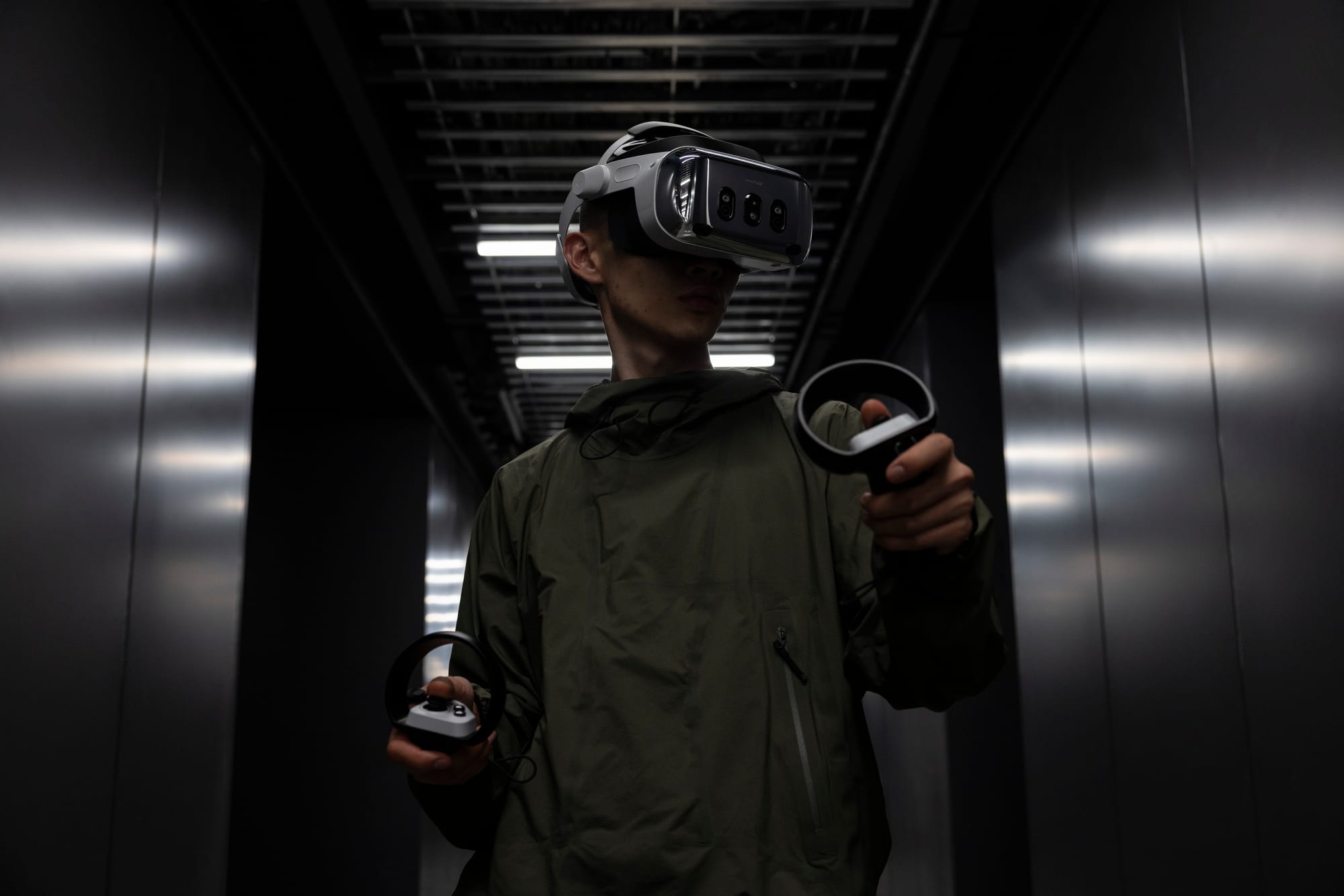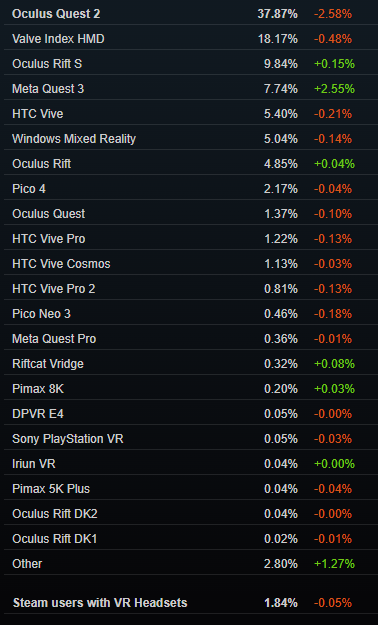Varjo XR-4 Promises Mixed Reality "Practically Indistinguishable From Natural Sight"
Varjo just announced the XR-4 series, its latest range of ultra high end PC-based headsets for enterprise and governments.
Varjo's
XR-3 is now almost three years old, and the new XR-4 series brings significant improvements to the displays, optics, passthrough, and more, while reducing the base price by thousands of dollars. Like all previous Varjo headsets, it requires a powerful PC with a high-end graphics card which it must be tethered to.
Since the launch of
VR-1 in 2019, the unique selling point of Varjo's headsets has been that they have retinal resolution, meaning beyond what the human eye can discern, in a small area in the center of your view, achieved via a secondary "focal" microdisplay spliced into the image of each lens.
Varjo XR-4 gets rid of these secondary microdisplays and instead uses a single 4K LCD panel per eye. Because Varjo's aspheric lenses have a highly variable magnification, much greater in the periphery than the center, 4K is enough to achieve 51 pixels per degree (PPD) in the center, close to the 60 PPD generally accepted as the threshold for retinal resolution.
| Varjo XR-3 | Varjo XR-4 Series |
Displays
(per eye) | 1920×1920 in central 27°×27° (70PPD)
+
2880×2880 background (30PPD peak) | 3840×3744 (51PPD peak) |
| Refresh Rate | 90Hz | 90Hz |
| Field of View | 115°×78° | 120°×105° |
| Local Dimming |  |  |
| Brightness | 100 nits | 200 nits |
| Color Gamut | 93% DCI-P3 | 96% DCI-P3 |
These dual 3840×3744 panels have a refresh rate of 90Hz, mini-LED backlighting for 10000:1 contrast local dimming, 200 nits brightness, and 96% DCI-P3 color gamut.
Varjo XR-4 also has larger lenses with a significantly taller vertical field of view, 105° compared to the just 78° of XR-3. The horizontal field of view has been improved too, to 120° from 115°.
As with Varjo's previous headsets, high quality eye tracking is built-in to enable automatic IPD adjustment and dynamic foveated rendering.
Varjo XR-4 demo showing seamless merging of virtual and real elements.
Varjo has also made significant improvements to the camera passthrough. XR-3 had dual 12 megapixel cameras, while XR-4 has 20 megapixel cameras.
There are two variants of XR-4. The standard version has fixed focus cameras, while the XR-4 Focal Edition has autofocus cameras that focus to what your eyes are currently looking at. Varjo says the base XR-4 can achieve an effective passthrough angular resolution of 33 PPD, while XR-4 Focal Edition can achieve 51 PPD.
That means passthrough on XR-4 Focal Edition has the same near-retinal central angular resolution as the display itself. Varjo claims this is by far the highest quality passthrough on any current or announced headset, "practically indistinguishable from natural sight". XR-4's displays have over 20% more pixels than even
Apple Vision Pro, and the passthrough cameras output more than twice as many pixels per second. We haven't tested XR-4 ourselves yet though, and the perceived quality of passthrough can depend on characteristics that don't show up on spec sheets.
| XR-3 | XR-4 | XR-4 Focal Edition |
| Cameras Resolution | 12 megapixels | 20 megapixels | 20 megapixels |
| Camera Autofocus |  |  |  |
| Passthrough Resolution | 33 PPD | 33 PPD | 51 PPD |
| LiDAR | 0.038 megapixels | 0.3 megapixels | 0.3 megapixels |
| Ambient Light Sensors |  |  |  |
The resolution of the LiDAR sensor used to generate a real-time depth map for dynamic occlusion and object segmentation has also been dramatically increased, with almost eight times as many laser points used.
To further increase the realism of mixed reality, Varjo has added ambient light sensors to XR-4, which give developers real-time information about the lighting in the room that they can use to light virtual objects to match it.
Varjo XR-4 with included controllers from Razer.
Varjo XR-4 also has inside-out positional tracking and comes with tracked controllers in the box, a first for the company. Previous Varjo headsets required third-party SteamVR Tracking base stations and controllers, though XR-3 has had an inside-out headset tracking beta program since mid-2022.
The controllers are tracked by cameras on the corners of the visor and come thanks to a partnership with Razer. Controller-free tracking is also supported via an Ultraleap add-on accessory.
Another first for a Varjo headset in the XR-4 is built-in speakers and microphones. Varjo claims these off-ear speakers provide high-quality audio without the need for headphones, and the dual microphone array includes noise cancellation.
The Varjo XR-4 series can be ordered today, and the company says the first shipments will begin in December. The standard XR-4 is priced at $3990, around 40% cheaper than XR-3, while the XR-4 Focal Edition costs $9990.
Varjo is only selling to organizations at first, but plans to also let individuals buy XR-4 at some point in the future.
Varjo is also offering Secure Edition versions of both headsets for customers with "exceptionally enhanced security requirements" such as militaries and intelligence agencies, manufactured in Finland without any wireless components and priced at $7990 and $13900 respectively.
Varjo says it has already secured major companies as XR-4 customers, including Volvo Cars, Rivian Automotive, and Aechelon, which makes simulators for the US military.
UploadVR asked Varjo whether it is also planning a new version of its
Aero "prosumer" VR headset, which recently
had its price cut in half, or whether it was withdrawing from this market, but the company declined to answer.












